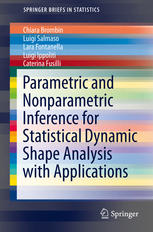

Most ebook files are in PDF format, so you can easily read them using various software such as Foxit Reader or directly on the Google Chrome browser.
Some ebook files are released by publishers in other formats such as .awz, .mobi, .epub, .fb2, etc. You may need to install specific software to read these formats on mobile/PC, such as Calibre.
Please read the tutorial at this link: https://ebookbell.com/faq
We offer FREE conversion to the popular formats you request; however, this may take some time. Therefore, right after payment, please email us, and we will try to provide the service as quickly as possible.
For some exceptional file formats or broken links (if any), please refrain from opening any disputes. Instead, email us first, and we will try to assist within a maximum of 6 hours.
EbookBell Team

4.4
22 reviewsThis book considers specific inferential issues arising from the analysis of dynamic shapes with the attempt to solve the problems at hand using probability models and nonparametric tests. The models are simple to understand and interpret and provide a useful tool to describe the global dynamics of the landmark configurations. However, because of the non-Euclidean nature of shape spaces, distributions in shape spaces are not straightforward to obtain.
The book explores the use of the Gaussian distribution in the configuration space, with similarity transformations integrated out. Specifically, it works with the offset-normal shape distribution as a probability model for statistical inference on a sample of a temporal sequence of landmark configurations. This enables inference for Gaussian processes from configurations onto the shape space.
The book is divided in two parts, with the first three chapters covering material on the offset-normal shape distribution, and the remaining chapters covering the theory of NonParametric Combination (NPC) tests. The chapters offer a collection of applications which are bound together by the theme of this book.They refer to the analysis of data from the FG-NET (Face and Gesture Recognition Research Network) database with facial expressions. For these data, it may be desirable to provide a description of the dynamics of the expressions, or testing whether there is a difference between the dynamics of two facial expressions or testing which of the landmarks are more informative in explaining the pattern of an expression.